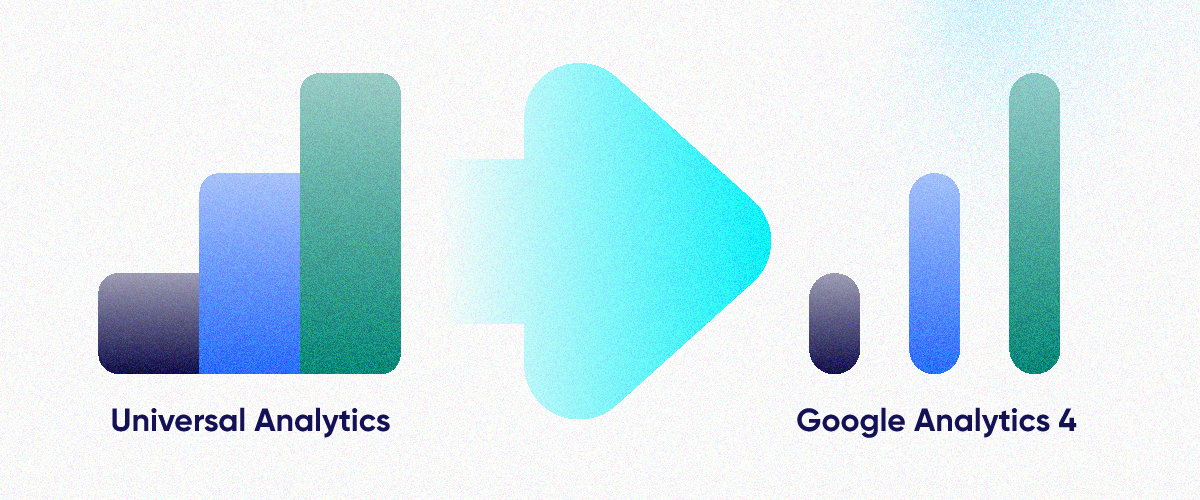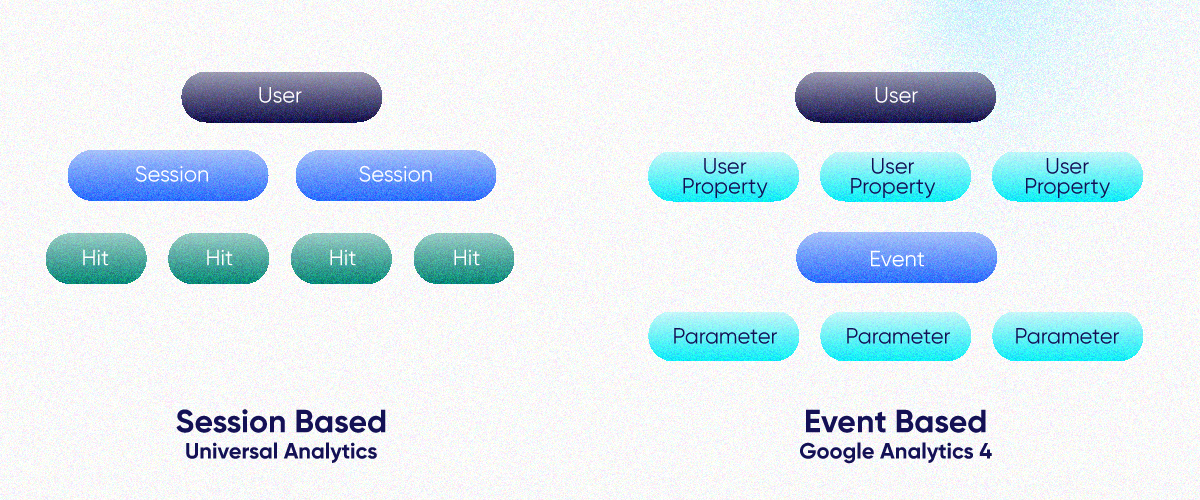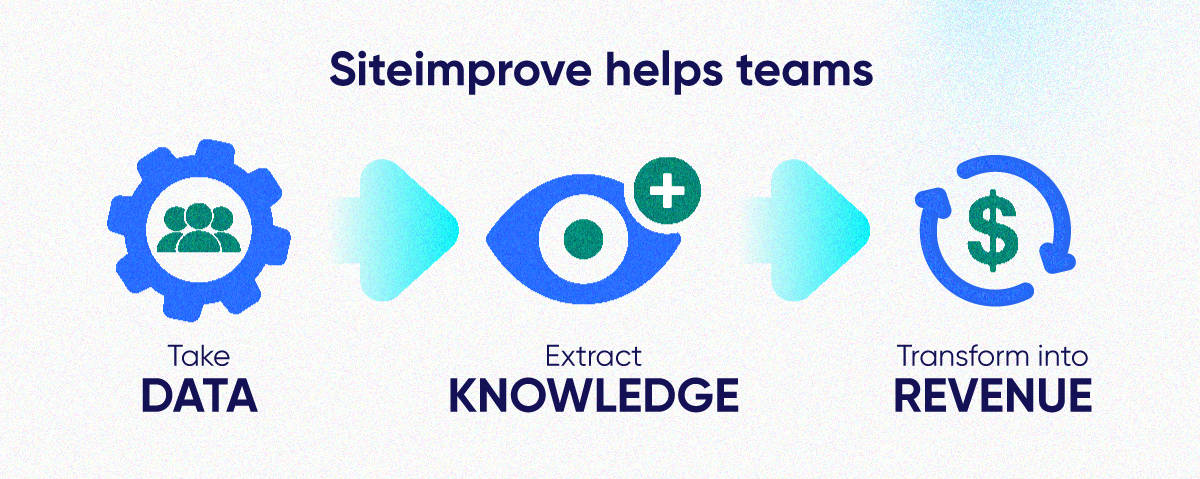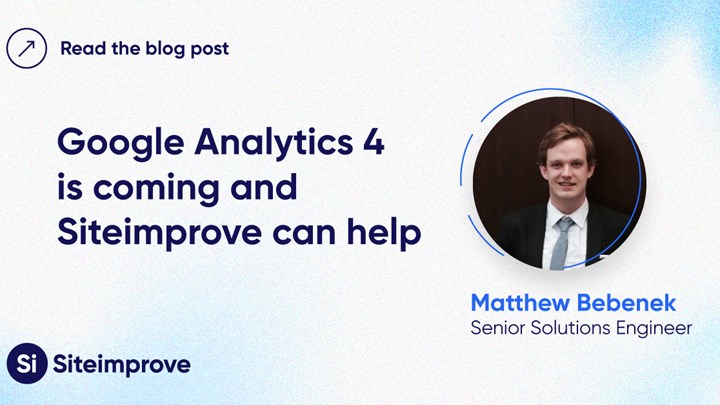Google Analytics 4 is coming and Siteimprove can help
- By Matt Bebenek - Nov 24, 2022 Web Analytics
July 1, 2023 is an important date for managers of the 28.1 million websites using Google Analytics. That’s the day Google’s Universal Analytics platform is retired and will stop processing new website hits and data. It’s also the day its successor, Google Analytics 4 (GA4) officially takes its place, although it is already possible to use and collect data with GA4 since earlier this year.
So what’s the big deal? An updated platform will take the place of an outdated one, right? Most Google Analytics users are expecting GA4 to do everything Universal Analytics does and more.

But those users will find themselves disappointed.
There is no denying GA4’s capabilities will be beneficial to your company, or that its new capabilities are really, really cool. However, this is not a one-to-one replacement. As GA4 moves on to solve new, complicated problems for your business, there are some features you’ve grown accustomed to that will be missing. This could leave you with data needs that require filling.
Fortunately, Siteimprove can help fill those gaps. Working complementary to GA4, Siteimprove can ensure you have everything you need to better manage and grow your revenue from your online presence by improving your website’s content quality, accessibility, and search engine optimization through understanding what is positively and negatively impacting your bottom line and building off of that.
In this article, we will cover how GA4 differs from its predecessor, how the transition to GA4 will take place, how GA4 will cover performance tracking on your site, and how Siteimprove Analytics is an essential companion to Google Analytics’ newest tool.
How GA4 differs from Universal Analytics
Like Universal Analytics, GA4 will provide value to millions of businesses hoping to improve their website. How they provide that value, however, will be quite different.
The biggest change is that, while Universal Analytics is a session-based data analytics system, GA4 is an event-based system.
Universal Analytics: a session-based system
Session-based analytics platforms are great at telling companies how many sessions a certain page has received. How long does a visitor to a certain webpage stay? What is a page’s bounce rate? How is web traffic finding your site?
These are the kinds of important questions a session-based system like Universal Analytics has answered.

Google Analytics 4: an event-based system
A platform that is event-based, however, focuses on creating the fullest possible picture of a customer’s journey. While a session-based system like Universal Analytics can give you data on how many sessions a certain page has received, event-based platforms like GA4 track a user’s specific clicks, scrolls, and other website interactions to uncover profound insights about the real life users who made those sessions.
This difference in system type may be the biggest change between Universal Analytics and GA4, but other variations will include -- but aren’t limited to -- how accounts are structured and the importance of Google Tag Manager.
Transitioning to GA4
Beginning on October 14, 2020, all new Google Analytics properties included GA4 as their default analytics option. Still, web developers and marketers have been slow to make the change from Universal Analytics.
Backlash from perceived bugs in the system, as well as a longing for some of Universal Analytics’ most popular features have slowed GA4’s takeover.
The takeover, however, is inevitable.
Earlier this year Google announced all standard Universal Analytics properties would stop processing hits on July 1, 2023. Universal Analytics 360 properties are to continue a little longer, but only until October 1 of that same year.
Google has said companies can keep older data in the short term, but they plan to announce a date on which that data will no longer be accessible unless it has been saved externally.
Companies should not view this transition passively. There is work to be done on your end. In addition to learning how GA4 will be different and determining how your business will plug those data gaps, web designers will also need to be involved. The data models between Universal Analytics and GA4 are different. This means new logic must be programmed and can’t simply be copied over from the previous platform.
How GA4 covers performance tracking on your website
The upcoming change to GA4 has made some in the industry nervous. Those of us who have used it, however, agree there is much to love about the new system. Google says GA4 is designed for “the future of measurement.” Here are some of the ways this is true:
- The platform’s predictive capabilities don’t need complex models to offer guidance to your business.
- As mentioned above, GA4 paints a deeper profile of your website’s visitors by using an event-based analytics system rather than a session-based one.
- GA4 includes privacy controls such as behavioral and conversion modeling, and cookieless measurement.
- Rather than only collecting data from website visits, GA4 is able to better understand your customers by collecting important analytics from their visits to your connected apps, as well.
- By directly connecting to your media platforms, GA4 drives traffic to your website and apps.
As a result, GA4 is going to be excellent for complex functions such as cross-domain and cross-app tracking. Let’s say, for example, your business is finance. You have a web property created and the goal is that your users will fill out a mortgage application. With GA4, you can track each user’s entire journey around your website, as well as from your website to your application (and back).
That’s very helpful and something no one but GA4 can do. In fact, it’s why the new platform exists.
But while it’s exciting that businesses like yours are gaining access to that functionality, you’ll also be losing some of the basic web analytics you have come to expect from Universal Analytics.
How many people visited your webpage? How many users left your website after visiting only a single page? How long did a user spend on that particular page? Traditional functionalities like these are either missing completely or take a very long time to set up.
Another thing missing is the ‘why’ behind the data Google provides. Why aren’t my pathways performing? Why are people dropping off here in my funnel? Why are Source A or Campaign B not bringing in the revenue I expected?
The hole this leaves for companies is huge, and that’s where Siteimprove Analytics comes in.
Siteimprove Analytics can drive value
I hope I have made it clear that there are huge benefits and upgrades to GA4. But it’s important to acknowledge that while the new platform has many advantages, there will also be some new challenges.
Gone are the days when you could receive a report, identify a problem, and then simply go in and do remediate work on that problem. If you choose to use GA4, alone, you will need to have everything laid out in advance. You have to be able to predict your problem before you begin and we all know the nature of business is too often unpredictable.
For example, let’s say GA4 shows you that you have a 10% conversion rate moving people from your website to your app. Then you see your conversion rate is once again 10% from your app to your product. In total, that’s a 1% conversion rate.
Whether that’s a low or high conversion rate probably depends on your industry rate, but certainly you have questions about that rate, right? You want to dig into why. Why did some choose to purchase your product or service, and are there trends you can learn from about why so many did not?
Unfortunately, GA4 doesn’t provide that capability. It’s arguably why GA4 and Universal Analytics are free. They report important numbers but they are not providing a value beyond that.
This is what Siteimprove Analytics does best. We provide important value to your business’ data analytics strategy. We allow you to examine the data you receive from Google Analytics—whether it’s from Universal Analytics now or GA4 in the near future— and to retroactively set goals that respond to that data. We help you answer questions about the numbers you receive from Google Analytics and tell you what’s behind those numbers.

Most importantly, we help you both understand how much revenue is driven by these decisions, and how to automate these processes to save you time. And using Siteimprove’s behavior analysis tools and their filtering capabilities, you can also dig into the ‘why’ behind poor results at a source-based level. You can take what you learn about visitor behavior and refine your user acquisition strategies and user journeys.
There is a lot that GA4 can do that no one else can. But without a tool like Siteimprove Analytics, GA4’s functionality simply won’t be as useful in transforming your business.
Transform your business with Siteimprove Analytics
GA4 is coming and there is no stopping it. Responsible companies will use this time to learn and explore how to make the event-based data analytics system work best for them. With less than a year until website hits will no longer process on Universal Analytics, the time is now to get your feet wet with Google Analytics’ newest platform.
As you get comfortable with GA4, I think you’ll discover a lot you love. You’ll also discover some important holes.
Fortunately, Siteimprove and its analytics tool not only plug those data gaps, but also complement GA4 to help you transform your analytics system into one that can answer essential questions for your company. With Siteimprove Analytics, you’ll receive powerful insights into your visitors’ behaviors and your website’s performance with intuitive dashboards and easy-to-use reporting. The result will be data-driven decisions that will ultimately drive revenue.
Are you ready to take your digital experiences to the next level with data insights you can count on? Let’s make something great together. Fill out this short form and let’s have a conversation about the right solution for your business.
